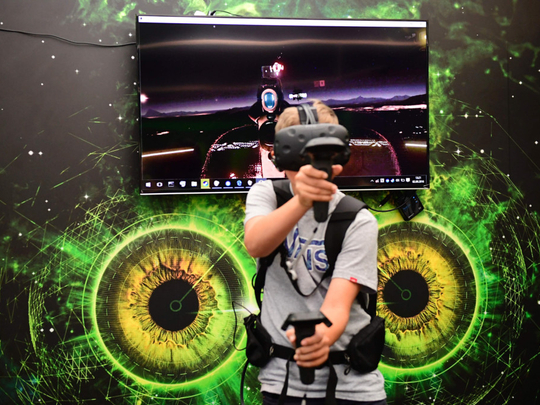
Dubai: The augmented and virtual reality market in the Middle East and Africa will grow more than 100 per cent for the next four years as the region is gaining traction.
Following years of hype, augmented and virtual reality is becoming the biggest trend in computing in 2016.
Virtual reality (VR) allows users to engage in a 360-degree 3D computer-simulated reality and immerse in places through videos or photos and allow users to interact by elevating live-event experiences such as concerts, indulge in adventure sports without the risks from the comfort of the couches.
Augmented reality (AR) is a technique that transforms the screen into what has been described as a magic crystal ball with which users can interact virtually with the real world. Imagine getting detailed information about the structure and the ability to flip the images to your liking — with a single click.
With industry powerhouses such as Microsoft, Samsung, Google, Sony, HTC, and Facebook pushing the technology to the masses, Saad Al Khadem, a research analyst at International Data Corporation, said that the end-user awareness and familiarity is only going to grow.
And with Apple expected to enter the bandwagon, the industry is going to be competitive as film makers and travel industries are also planning to release VR contents.
Al Khadem expects the MEA market to expand from a relatively moderate value of $181.59 million this year to top a staggering $6 billion in 2020.
However, Deloitte Global predicts that virtual reality (VR) will have its first billion dollar year in 2016, with about $700 million in hardware sales, and the remainder from content.
About 2.5 million VR headsets and 10 million game copies are expected to be sold this year globally. Majority of the spending on VR is likely to be by core users rather than casual gamers.
While anyone with a smartphone could try out a variant of VR, the majority of VR’s revenues in 2016 will likely be driven by a base of tens of millions of core gamers rather than the hundreds of millions of occasional console or PC gamers, or the billions who play casual games.
Zaid Selman, assistant director for transaction services and financial advisory at Deloitte, said that the Middle East is one of the fastest growing and most promising regions for VR, both for gaming and enterprise applications.
However, Al Khadem said the concept of augmented and virtual reality is still relatively new for both vendors and consumers alike. However, the global success of Pokémon Go has brought the concept to a much broader audience.
IDC expects consumers to account for more than $100 million of the region’s AR/VR spending in 2016. This represents a share of around 56 per cent, and makes the consumer segment the biggest in the region as things stand.
However, Al Khadem expects the consumer segment’s share of the market to steadily fall over the forecast period as the commercial segment sees more and more use cases emerge for the technology.
From 2018 onwards, he said the consumer segment will cease to be the biggest spenders in the market, giving way to segments such as distribution and services, and manufacturing and resources.
“We forecast spending on AR/VR hardware elements to grow from $118 million in 2016 to reach more than $3.2 billion in 2020,” Al Khadem said.
“There are currently offerings spanning all price points, from thousands of dollars at the top end down to tens and hundreds of dollars — or even free in some cases — at the bottom. The main challenge is getting the technology into the hands of the masses, but even more important is the need to provide consumers with compelling content that proves this is a viable technology capable of adding meaningful value to their lives,” he said.
From a global perspective, Asia/Pacific (excluding Japan), the United States, and Western Europe will account for three quarters of worldwide AR/VR revenues in 2016, according to IDC. The individual market values for these three regions will be broadly similar early in the forecast period, but the US is expected to pull well ahead of the other two by 2020.
As AR/VR technology is still going through the initial stages of adoption, Al Khadem said that every region is expected to see annual growth of more than 100 per cent over the coming five years.










